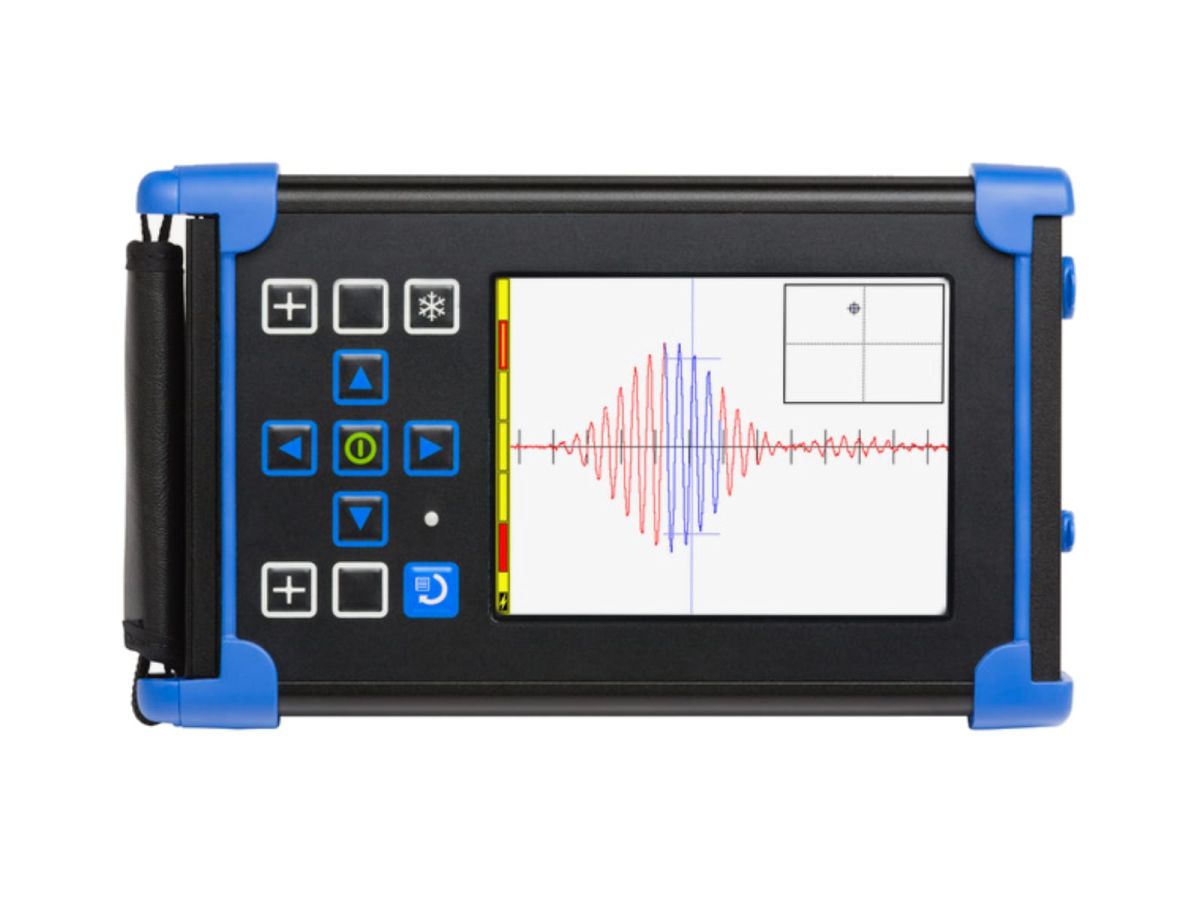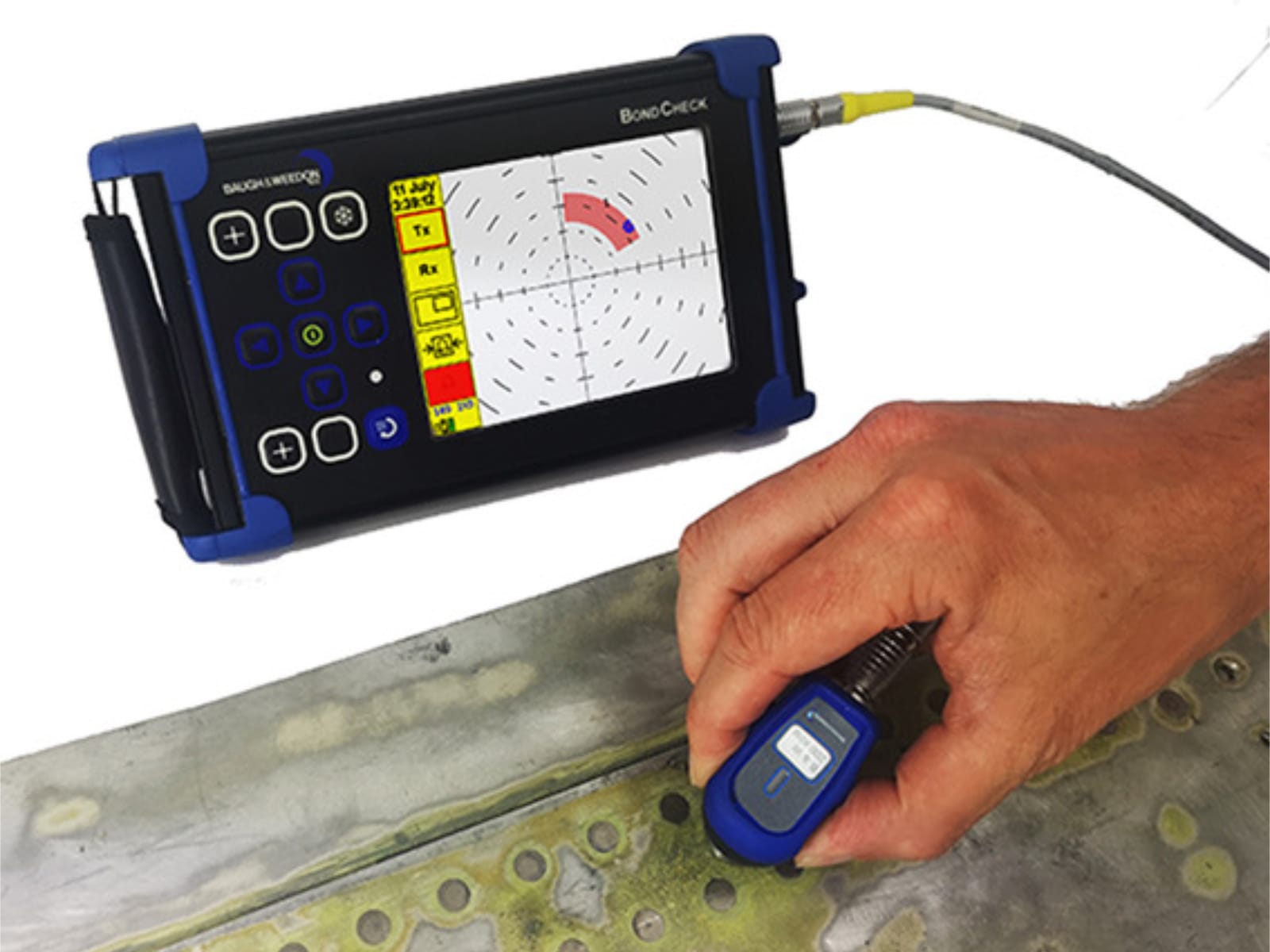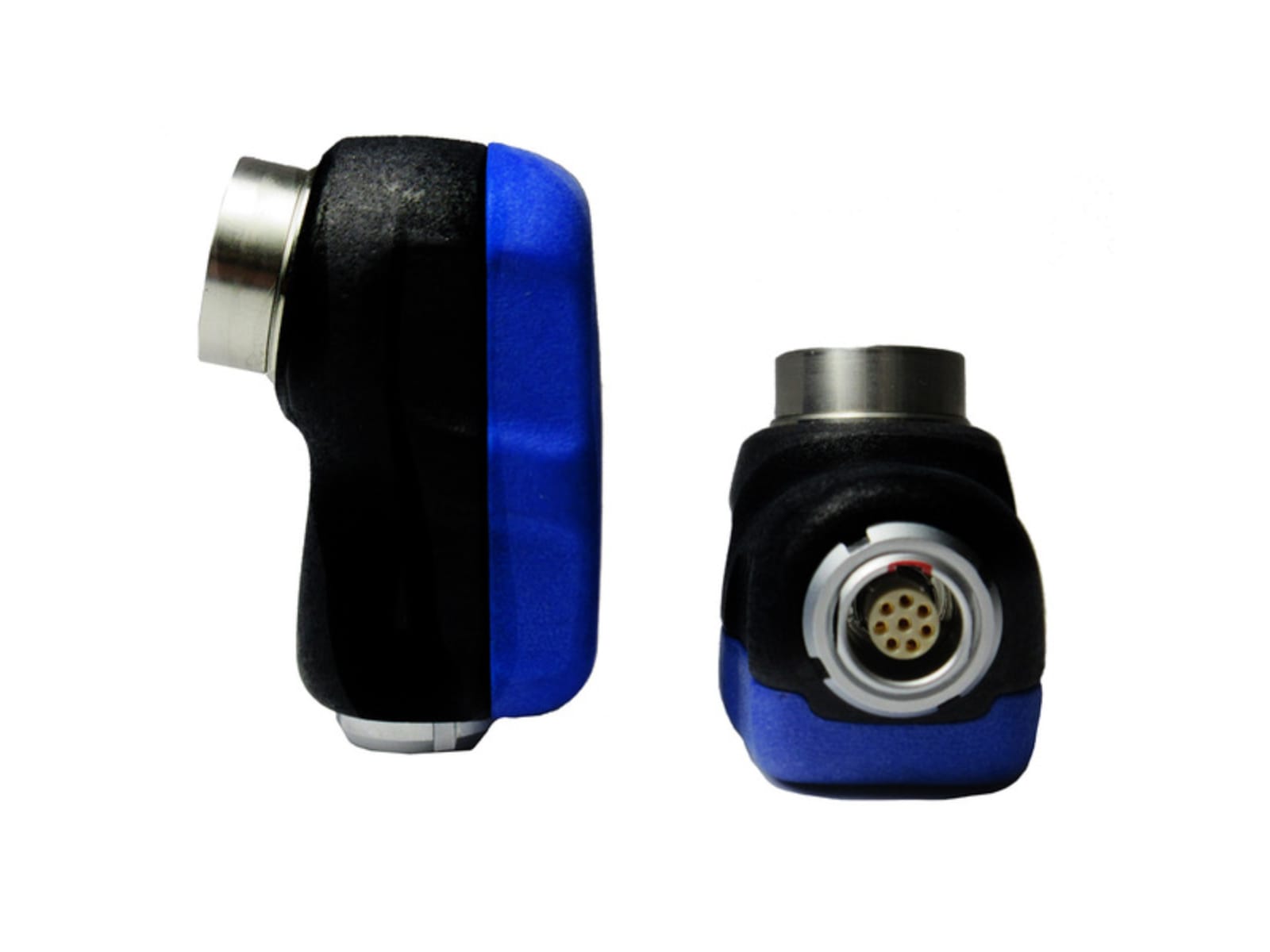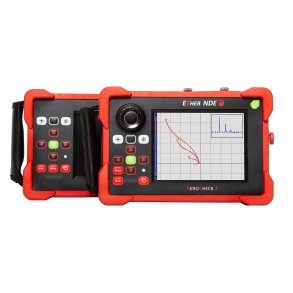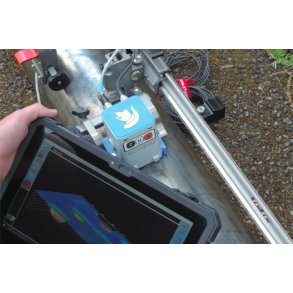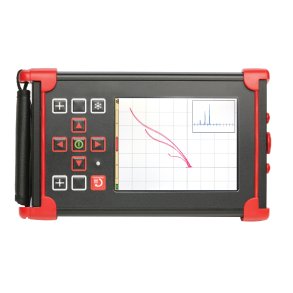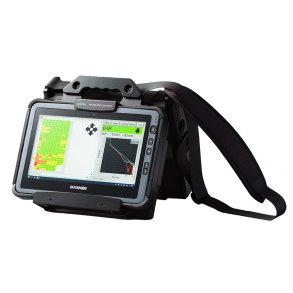| Display |
Type |
5.7 in (145 mm), 18-bit colour, daylight readable |
| |
Viewable Area |
115.2 mm (H) × 86.4 mm (V), resolution 640 × 480 pixels |
| |
Colour Schemes |
User-configurable: Dark, Bright and Black & White |
| |
Configurable Screen |
Full Screen, Single, Dual Pane with variable size, location and function (e.g. X-Y, Timebase) |
| |
Display Modes |
Pitch-Catch, Resonance & MIA: Spot and Sweep; RF Timebase for Pitch-Catch only |
| |
Graticules |
None; Grid (4 sizes 5, 10, 15, 20 % FSH); Polar (4 sizes 5, 10, 15, 20 % FSH) |
| |
Offset |
Spot position Y -50 to +50 %, X -65 to +65 % |
| |
Flip |
Manual or automatic screen rotation for left- or right-handed use |
| Transmit |
Operating Mode |
Pitch-Catch / MIA tone burst |
| |
Output Frequency Range |
Pitch-Catch: 5 kHz – 50 kHz
Resonance: 50 kHz – 500 kHz
MIA: 2 kHz – 10 kHz |
| |
Output Voltage |
Pitch-Catch tone burst: 10 ranges 1, 3, 6, 8, 10, 12, 18, 24, 30, 36 V pk-pk
Pitch-Catch sweep: 3 ranges 12, 24, 36 V pk-pk
Resonance: 3 ranges 12, 24, 36 V pk-pk
MIA: 3 ranges 12, 24, 36 V pk-pk (high-voltage drive in probe) |
| |
Minimum Output-Drive Load Impedance |
300 Ω |
| |
Waveform Type: Pitch-Catch / MIA |
Tone burst with rectangular or Hanning window plus chirp
Max transmit-waveform points 8 192
Waveform duration max 3.2 ms / 2.5 ms
DAC clock rate 2.5 MHz fixed
Frequency sweep 5 kHz – 50 kHz / 2 kHz – 10 kHz |
| |
Waveform Type: Resonance |
Fixed or swept waveform
Frequency range 5 kHz – 500 kHz |
| Receive |
Pitch-Catch / MIA Tone Burst |
Sample rate 440 kHz / 100 kHz
Max PRF 14 Hz
Sample bit depth 12-bit
Gain range 0 – 60 dB
Receive bandwidth 5 kHz – 100 kHz (-6 dB)
Input-voltage saturation ±400 mV
Time-base range 100 µs – 2 ms / 22 ms
Time-base delay 0 µs – 1 ms
Crosstalk > 40 dB isolation
Amplitude/phase extraction cursor resolution <5 µs / 10 µs |
| |
Resonance & Pitch-Catch Sweep |
Dynamic range > 150 dB
Bit depth 24-bit
Gain range -30 – 60 dB
Receive bandwidth DC – 20 MHz
Amplitude/phase extraction via QAM demodulation |
| |
Filtering |
Fixed hardware high-pass filter (Pitch-Catch) to reduce surface-scanning noise
Fixed hardware low-pass filter 100 kHz (Pitch-Catch) for optimum amplifier SNR
Configurable software high-/low-pass filters for all modes |
| Software |
Acquisition Gate in RF Mode |
Adjustable gate start, width and threshold |
| |
Alarm Gate in Y-T Mode |
Multiple box, circle and sector alarm zones |
| |
Calibration Mode |
Frequency sweep of bonded and disbonded areas; automatic inspection-frequency selection with manual adjustment; air calibration in resonance mode |
| |
Bond/Disbond Alarm |
Status on screen and probe LED |
| Removable Data Storage |
Setup Storage |
microSD up to 32 GB, > 10 000 setups |
| |
Stored Screen Shots |
microSD up to 32 GB, > 10 000 screenshots |
| |
Record Replay |
Real-time trace recording; replay on instrument or PC up to 164 s |
| Physical |
Weight |
1.2 kg (2.7 lb) |
| |
Size (W × H × D) |
237.5 mm × 144 mm × 52 mm (9.4 in × 5.7 in × 2.1 in) |
| |
Material/Housing |
Magnesium-silicon (Mg Si 0.5) aluminium alloy, powder-coated |
| |
Operating / Storage Temperature |
Operation -20 °C to +60 °C
Storage -20 °C to +60 °C (up to 12 months); nominal +20 °C |
| |
IP Rating |
IP 54 |
| Warranty |
3-year manufacturer’s warranty |
Covers all BondCheck components; excludes customer damage or misuse (probes not included) |


_copy (1) (1)/assets/images/header/trustpilot.png)
